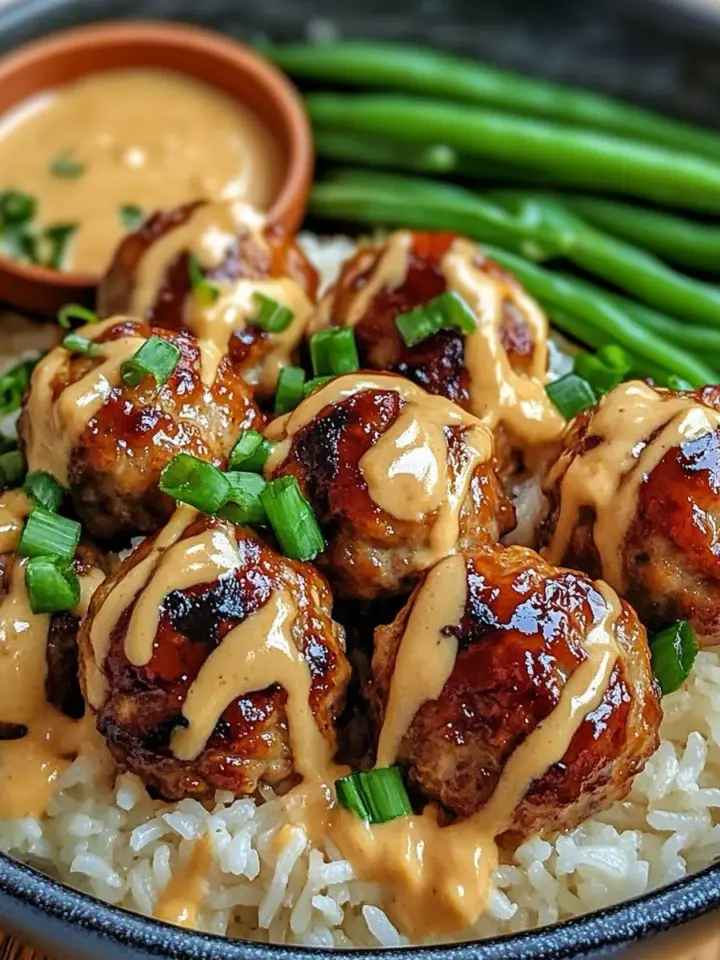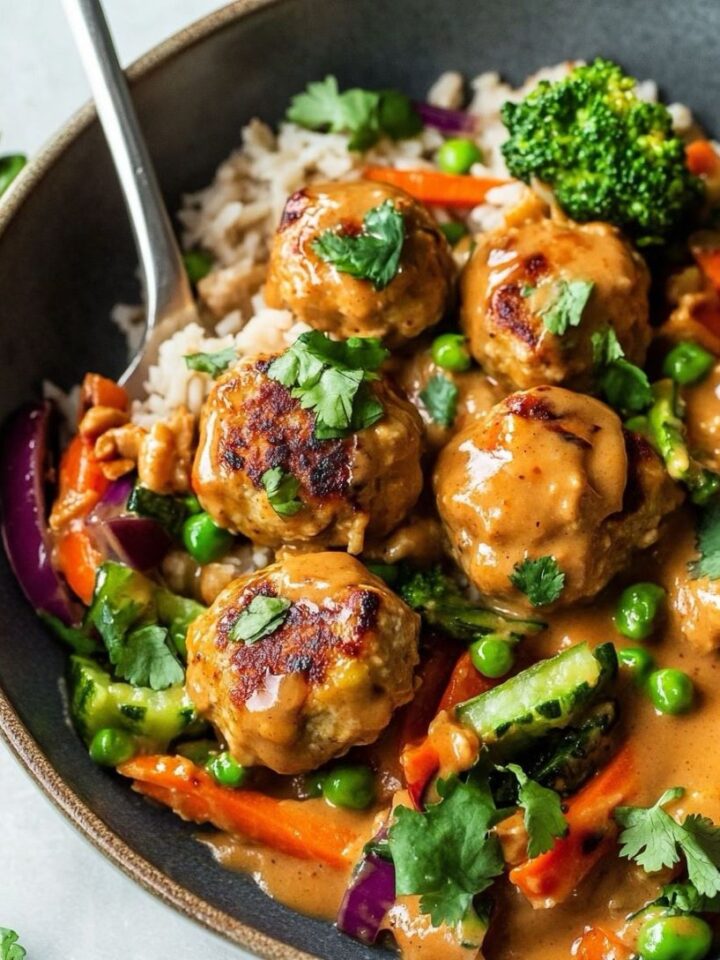There’s something irresistibly comforting about a bowl of noodles coated in a creamy, nutty sauce with just the right amount of kick. The first time I made Thai Peanut Noodles, it was a desperate dinner fix with random pantry staples – a jar of peanut butter, some noodles, and a splash of soy sauce. What emerged from that experiment was so delicious, it instantly earned a spot in my weekly rotation.
This recipe has evolved since then, drawing inspiration from Thai flavors I’ve loved in restaurants and street food stalls. It’s my go-to dish when I want something fast, satisfying, and full of bold, umami-rich flavor. And the best part? It’s endlessly customizable.
Why You’ll Love This Recipe
- Quick & Easy: Ready in just 20 minutes from start to finish.
- Pantry-Friendly: Uses simple ingredients you probably already have.
- Flavor Explosion: Creamy peanut butter, zesty lime, savory soy sauce, and a spicy kick.
- Versatile Base: Works with any kind of noodle – rice, ramen, udon, even spaghetti!
- Meal Prep Friendly: Great hot or cold, and perfect for lunch the next day.
- Customizable: Add veggies, protein, or swap ingredients to fit your diet.
Ingredients You’ll Need
For the Thai Peanut Butter Sauce:
- ½ cup peanut butter (creamy or chunky – your call!)
- ¼ cup soy sauce – for that rich, salty base
- 2 tablespoon rice vinegar – adds a touch of tang
- 1 tablespoon chili-garlic sauce or sriracha – for heat
- 1 tablespoon sesame oil – for a toasty aroma
- 1 tablespoon honey or brown sugar (optional) – balances out the spice
- 2 tablespoon fresh lime juice – brightens everything up
- 2 cloves garlic, minced (or 1 teaspoon garlic powder)
- 1 tablespoon grated fresh ginger (or 1 teaspoon ground ginger)
- 2–4 tablespoon water or stock – to thin the sauce to your liking
For the Noodles:
- 8 oz noodles – rice noodles, ramen, egg noodles, or whatever you have on hand
- 1 tablespoon sesame oil – to coat the noodles and add flavor
Garnishes (Highly Recommended):
- Crushed red pepper flakes – extra spice
- Fresh green onions, chopped
- Chopped peanuts or sesame seeds
- Lime wedges – a squeeze of lime before serving makes a big difference
Substitutions & Swaps:
- Gluten-free? Use tamari or coconut aminos instead of soy sauce.
- Nut allergy? Try sunflower seed butter or tahini.
- Vegan? Stick with maple syrup or agave instead of honey.
Step-by-Step Instructions
1. Prepare the Noodles
Cook your noodles according to the package instructions. Once tender, drain them and rinse under cold water to stop the cooking. Toss them with a tablespoon of sesame oil to keep them from sticking and add a nutty layer of flavor.
Tip: Rinsing helps prevent mushy noodles and keeps them springy!
2. Make the Peanut Butter Sauce
In a medium mixing bowl, whisk together peanut butter, soy sauce, rice vinegar, chili-garlic sauce, sesame oil, honey (if using), lime juice, garlic, ginger, and a bit of water or stock. Keep whisking until smooth and creamy.
Tip: If the sauce seems too thick, add more water or stock one tablespoon at a time until it reaches your desired consistency.
3. Toss It All Together
Add your noodles to a large mixing bowl and pour the sauce over them. Use tongs or clean hands to toss everything together until the noodles are fully coated.
Tip: Warm noodles will help absorb the sauce better, but this also works great cold for meal-prep lunches.
Serving and Storage Tips
Thai Peanut Noodles are best served immediately, garnished with fresh green onions, chopped peanuts, and a generous squeeze of lime. Want more crunch? Add shredded carrots or cucumber on top for a refreshing contrast.
These noodles can be served warm, at room temperature, or chilled – they’re incredibly forgiving! If you’re planning to enjoy them later, store the noodles in an airtight container in the fridge for up to 4 days.
Reheating Tips: Reheat gently in the microwave or on the stove with a splash of water or broth to loosen up the sauce. They taste great cold too, so no stress if you're packing them for lunch!
Helpful Notes
- Peanut Butter Matters: Natural peanut butter works great, but make sure to stir it well to avoid separation. Creamy store-bought peanut butter will make a thicker, richer sauce.
- Adjusting Spice Level: Start with less chili-garlic sauce and add more as needed. Everyone’s spice tolerance is different!
- Bulk It Up: Add shredded rotisserie chicken, tofu, shrimp, or sautéed veggies like bell peppers, snap peas, or broccoli to make this a complete meal.
- Common Mistake – Clumpy Sauce: If your sauce gets too thick or lumpy, just whisk in warm water a little at a time until it smooths out.
Frequently Asked Questions
- Can I use almond butter instead of peanut butter?
Yes! Almond butter gives a slightly different, but equally delicious, flavor. Just make sure it’s smooth for easy mixing. - What noodles work best for this recipe?
Rice noodles are traditional, but ramen, udon, soba, or even spaghetti work beautifully. - Can I make this dish ahead of time?
Absolutely. It stores well in the fridge for up to 4 days. Add a little water or broth when reheating to refresh the sauce. - How do I make it gluten-free?
Use rice noodles and swap soy sauce for tamari or coconut aminos. - Why is my sauce too thick?
This is common – just add warm water or broth, a tablespoon at a time, and whisk until it’s smooth and pourable. - Can I freeze it?
Not ideal. The sauce may separate and lose its creamy texture when thawed. Fresh is best here! - What veggies go well with this?
Try shredded cabbage, julienned carrots, edamame, or sautéed mushrooms for added nutrition and crunch.
Final Thoughts
Whether you're craving a cozy bowl of noodles or need a quick dinner that feels a bit special, Thai Peanut Noodles always deliver. They're bold, creamy, spicy, and endlessly customizable – basically everything you want in a comfort meal.
Serve them with a side of crispy spring rolls, a chilled cucumber salad, or even a simple miso soup. However you plate them, they’re guaranteed to satisfy.





